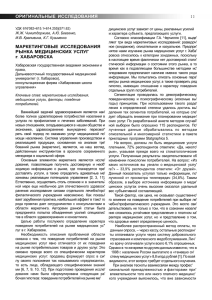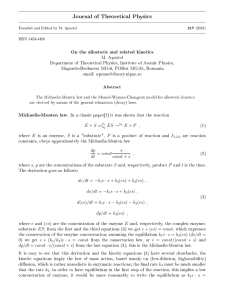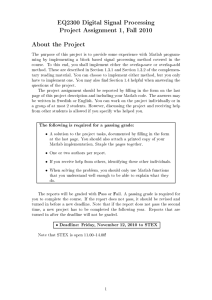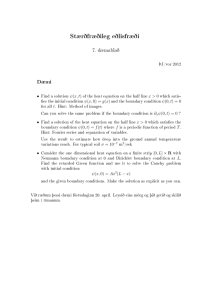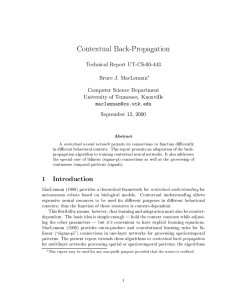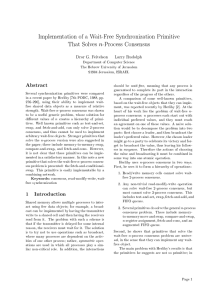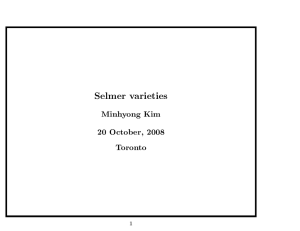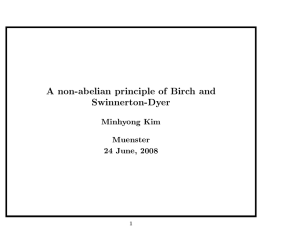ж р уы ь срв р й р ся о п ×
реклама
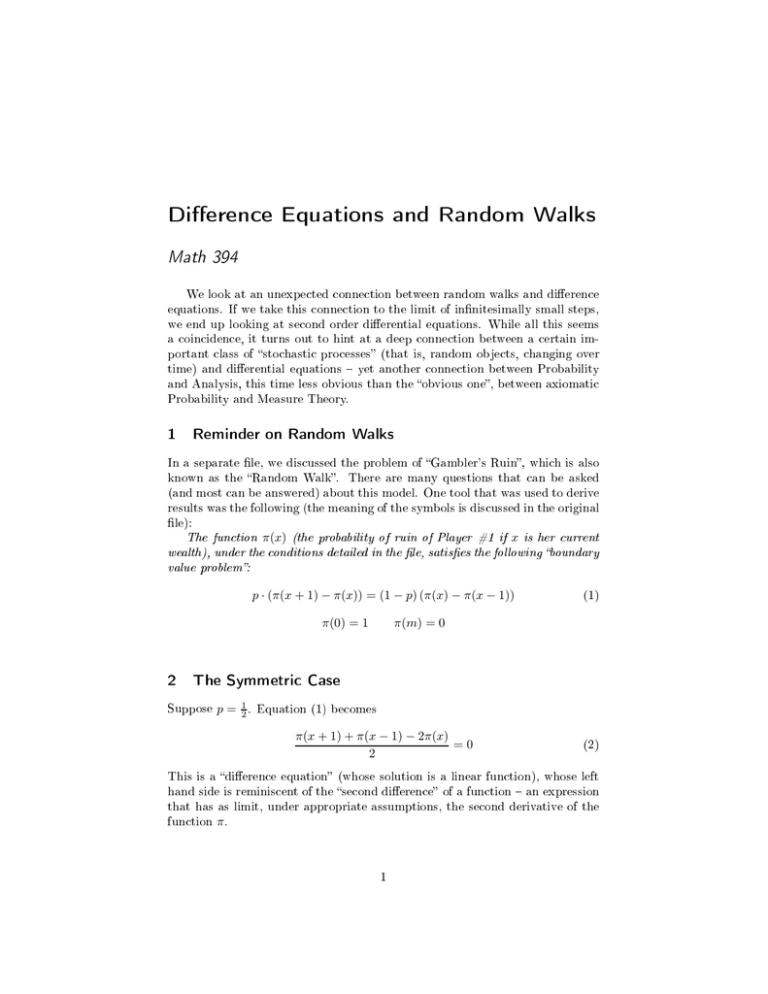
Dierene Equations and Random Walks Math 394 We look at an unexpeted onnetion between random walks and dierene equations. If we take this onnetion to the limit of innitesimally small steps, we end up looking at seond order dierential equations. While all this seems a oinidene, it turns out to hint at a deep onnetion between a ertain important lass of stohasti proesses (that is, random objets, hanging over time) and dierential equations yet another onnetion between Probability and Analysis, this time less obvious than the obvious one, between axiomati Probability and Measure Theory. 1 Reminder on Random Walks In a separate le, we disussed the problem of Gambler's Ruin, whih is also known as the Random Walk. There are many questions that an be asked (and most an be answered) about this model. One tool that was used to derive results was the following (the meaning of the symbols is disussed in the original le): The funtion π(x) (the probability of ruin of Player #1 if x is her urrent wealth), under the onditions detailed in the le, satises the following boundary value problem: p · (π(x + 1) − π(x)) = (1 − p) (π(x) − π(x − 1)) π(0) = 1 2 (1) π(m) = 0 The Symmetri Case Suppose p= 1 2 . Equation (1) beomes π(x + 1) + π(x − 1) − 2π(x) =0 2 (2) This is a dierene equation (whose solution is a linear funtion), whose left hand side is reminisent of the seond dierene of a funtion an expression that has as limit, under appropriate assumptions, the seond derivative of the funtion π. 1 2 3 The Asymmetri Case (Random Walk With Drift) In fat, in this model the domain of π are the non negative integers. Now, assume we hange our sale, so that eah step is of size h, instead of 1. The 1 domain of π onsists now of integer multiples of h . Assume we may extend π 2 to be dened over all real numbers in the interval [0, m], as a C funtion (a ontinuous funtion, with two ontinuous derivatives). 1 We an also multiply the equation by 2 , without hanging anything, sine h the right hand side is zero. We get π(x + h) + π(x − h) − 2π(x) =0 2h2 If we assume that π (3) is a funtion with two ontinuous derivatives (inidentally, the solution to (2) is linear in x, so it an be extended smoothly to a linear funtion, that surely satises our ondition), by Taylor's Theorem, 1 1 π(x+h)−π(x)+π(x−h)−π(x) = π ′ (x)·h+ π ′′ (x)·h2 −π ′ (x)·h+ π ′′ (x)·h2 +o h2 2 2 (where we use the familiar notation 0). o(x) for some funtion suh that limx→0 o(x) x = Substituting into (3), we get o h2 1 ′′ =0 π (x) + 2 h2 If we let h → 0, this equation turns into a 1-dimensional Laplae equation, with boundary onditions as above. Clearly, the only lassial solutions will be linear funtions, and the boundary onditions identify this funtion uniquely. 3 The Asymmetri Case (Random Walk With Drift) The le we are referring to, disusses the solution to (1) in the general ase, 1 when p 6= 2 . We may wonder what beomes of the disussion presented in setion 2 1 To this end, let us write p = 2 + κ (it doesn't matter what the sign of κ may 1 − κ, and the equation an be written as be, of ourse). Then, 1 − p = 2 π(x + 1) + π(x − 1) − 2π(x) + κ ([π(x + 1) − π(x)] + [π (x) − π(x − 1)]) = 0 2 Now, we have an additional term, involving rst dierenes. To repeat the argument in setion 2, we need to heat a little, sine, simply hanging our steps to size h, will lead to 1 ′′ π (x) · h2 + 2κπ ′ (x) · h + o(h) = 0 2 Now, dividing by h, and letting h → 0, leads to a rst order dierential equation whose solutions are onstant, and hene annot satisfy the boundary onditions. 2 Dividing by h leads to no limit at all. 3 3 The Asymmetri Case (Random Walk With Drift) The heating idea is to adjust the bias in the game (the asymmetry p and 1 − p), as we hange h. Preisely, we may set κ = 2b · h (as h → 0, the asymmetry of our random walks beomes smaller and smaller). 2 Now, dividing by h , and letting h → 0 leads to the equation between 1 ′′ π (x) + b · π ′ (x) = 0 2 (4) If you are familiar with linear dierential equations with onstant oeients, you will have no trouble nding the general solution to this one: with the harateristi roots being λ1 = 0, λ2 = −2b the general solution is of the form C1 + C2 e−2bx and the boundary onditions result in C1 + C2 = 1 C1 = −C2 e−2bm C2 = 1 e−2bm 1 , C1 = 1 − =− −2bm −2bm 1−e 1−e 1 − e−2bm π(x) = e−2bx − e−2bm 1 − e−2bm (You an easily hek that this is indeed a solution to (4), satisfying the boundary onditions π(0) = 1, π(m) = 0, and that this solution is unique). Hene, the limiting equation has an exponential type solution (not surprisingly, of ourse, if we reall what the solution to the dierene equation (1) turned out to be).
